
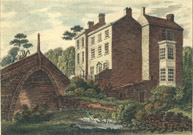
Dukinfield Bridge
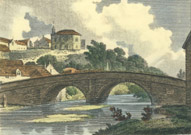
Stayley Bridge
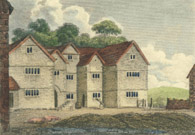
Stayley Hall
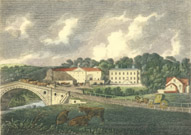
Hyde Hall - Hyde
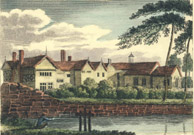
Dukinfield Hall
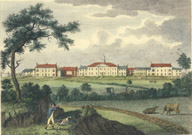
Fairfield Moravian Settlement
 |
 Dukinfield Bridge |
 Stayley Bridge |
 Stayley Hall |
 Hyde Hall - Hyde |
 Dukinfield Hall |
 Fairfield Moravian Settlement |
|
H.V. MORTON BLUE PLAQUEPlaques Permanent Home
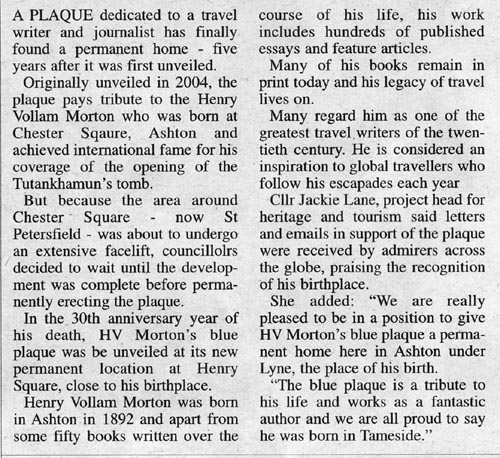
H.V. MORTON'S WORLDBy Kenneth Fields(First published in Heritage: The British Review, No.17 August/September 1987) Believing he was dying in far-off Palestine, the young Englishman made a solemn vow to himself. If he was destined to escape death he would return home England, then as a penance to the country he had neglected he would undertake a journey of discovery amongst his own people. I would go home in search of England, I would go through the lanes of England and the little thatched villages of England, and I would lean over English bridges and lie on English grass, watching an English sky. Fortunately, the young man did recover and in 1927 was true to his vow. He returned home to London, pointed his bull-nosed Morris west and began what was to become the most renowned English tour since Defoe. His simple, haunting prose recorded his journey in a fashion that has fascinated generations of Englishmen, reflected in its sales of over a million copies in this country alone. By this unique mixture of scholarly imagination and superb descriptive writing, H.V. Morton produced what has become a timeless masterpiece. Henry Vollam Morton was born in Ashton-under-Lyne on 25 July 1892, the son of a Scottish mother, Margaret Ewart, and an English father, J.V. Morton. Both his parents had literary talent, his father being the respected editor of the Birmingham Mail, one of a group of newspapers owned by Sir Arthur Pearson. He attended King Edward's School, Birmingham, where he showed an early interest in Egyptology. Ignoring the advice given by both his parents, instead of moving on to university he decided to train in the precarious world of journalism. At the age of 17 he joined the staff of the Birmingham Gazette and Express; working in each department he began to learn the business of newspaper production. By 1912 he had become an assistant editor, but like many a provincial newspaperman his eyes were set on Fleet Street. In the same year he left the Midlands to join the Empire Magazine later moving to the Evening Standard and then to the Daily Mail. Having now been appointed a sub-editor his career seemed poised to take off; then war was declared. The click of the typewriter seemed a world away as he passed through the Cavalry School on Salisbury Plain to be commissioned in the Warwickshire Yeomanry. Four years passed before he was able to pick up the threads of his promising career, but his flair for descriptive writing was a talent still in demand in Fleet Street. After two years at the Evening Standard he joined the Daily Express, then in 1923 came the assignment of a lifetime. Howard Carter and Lord Carnarvon had discovered the location of Tutankhamen's tomb at Luxor and it was about to be excavated. H.V. Morton was ideally suited to cover this specialized event; chosen as one of only three journalists present at the opening, his story appeared in over a hundred newspapers world-wide. His narrative portrayed vividly the greatest discovery of the century in Egyptian archaeology. This success led to him being allowed to write a series of vignettes about life in London. ?These essays were written day after day, week after week, to keep pace with the relentless machines of the Daily Express,? he wrote later. But they were received with delight by a public still recovering from the horrors of war, for Morton?s excursions seem to capture the very soul of the city. Although his writing career had hardly begun he was never to surpass, but only equal, the heights of this early work. Methuen Publishers, well aware that here was talent rare even in Fleet Street, approached him concerning these essays. In June 1925 his first book appeared, The Heart of London, followed shortly afterwards by four other volumes. All these books drew on his expeditions, by both day and night, into the labyrinth of London life. He was now ready to start the journey he had vowed to make while on an assignment in Palestine; he set out in search of England. But this was not to be a superficial chocolate-box tour, nor was it to be one that dwelt on the poverty that indeed existed in the twenties. It was to be made in a sincere, yet light-hearted fashion; a haphazard journey around the lanes of his homeland. His aim was simply to go around England like a magpie, picking up any bright thing that pleased?. Perhaps much of the appeal of his journey lay in the variety of both sites and characters that he met on the road. For this more than any other was a decade of transition; true Victorians were still alive witnessing the dawning of technologies unimaginable in their youth. At Bucklebury in Berkshire he met England?s last bowl turner, William Lailey, and at St. Anthony-in-Roseland he beard a newfangled wireless amidst an unchanged rural community. Beyond Penzance he came upon one of the dying breed of packmen who served the remote farms of Cornwall and in Norfolk he was viewed as a suspicious stranger. Morton knew by instinct that he had chanced upon an England that was fast disappearing; he was writing history. His book met immediate success, spurring him on to undertake a second tour which appeared as The Call of England in 1928. This time concentrated on the north of England, visiting large cities he had carefully avoided in his earlier work. Manchester, Liverpool and Birmingham were captured by his pen - brief yet penetrating impressions which conveyed the essential character of each. What he had achieved in England he now continued in other parts of Britain, In Search of . . . having now become his trade mark. His book on Scotland, appropriately dedicated to his mother, received tremendous acclaim. It attained an astonishing 14 editions in less that two years, and together with its companion, In Scotland Again, is regarded by many as his greatest work. The route he followed is still used by ardent Morton fans to explore the magnificence of glen and mountain. In 193I, at the age of 39, he became a special writer with the Daily Herald. Many of his articles written for this newspaper formed parts of his later books, including a fascinating study of the life of a coalminer which appeared in In Search of Wales. Lloyd George regarded this work as the best travel book on Wales that I have ever read. Although by now a famous name Morton preferred to remain in the background; few photographs of him were ever published, allowing him to pass unnoticed in communities and chat with ease to the characters which were so essential to his works. While researching his second book on Scotland he revisited Dumfries where an amusing incident occurred. I fell in conversation with a red-faced, blue eyed young man, talking to him about Burns and the Globe like an ignorant and benighted wayfarer. This is the only way to talk to people. My morale was considerably shattered when the young man advised me to read my own book on Scotland! I promised to do so. The inn-keeper in his shirt sleeves leaned over the bar and said, referring to myself: Aye he was here in this very room, but he did not make himself known. Morton's work reveals him to have been both a romantic and an adventurer, a far cry from the tarnished image of the hard-bitten Fleet Street reporter. In keeping with many successful men much of his achievement came from the encouragement given by his wife, Mary. Although never mentioned in his books, she accompanied him on most of his journeys both in this country and abroad, acting as both critic and confidant. At the height of his fame in the early thirties he received an offer that was to project his career in a different direction. Publishers Rich and Cowan offered him the unheard-of advance of Ł10,000 for a book on the Holy Land, and royalties of 33% on sales over 150,000. The result was In the Steps of the Master, now regarded as the most treasured of all Holy Land travel books. It became the top best seller of 1935 and has now sold over a million hard-back copies. A combination of poetic description, scholarly insight and sincere religious conviction came together as he recorded his journey through Palestine. This, his first major work of foreign travel, was to set the pattern for all the books that were to follow. Although many were destined to he published abroad, he was essentially an Englishman writing of his travels for the enjoyment of other Englishmen. Foreign landscapes were frequently compared to similar terrain found at home and he always sought out English associations. After completing an absorbing volume of essays dealing with the day-to-day lives of English working people, Our Fellow Men, he returned once more to the Holy Land. With unflagging enthusiasm he began a fascinating journey In the Steps of St. Paul, which led him from Palestine and Syria, through Turkey and Greece, taking in the islands of Malta, Rhodes and Cyprus to end in Rome. Taking the Acts of the Apostles as his guide book, Morton brought alive the greatest Christian missionary journey ever made. With astonishing skill he was able to transpose this epic adventure across the centuries, recording Paul's struggle to convert a Pagan world. Recognised as being far more than a well written travel-book, this work consolidated his position as an authority on the history of the Middle East. His love for this arid corner of the world led him to many other tours which were recorded in six further volumes. Greece, appreciating his amazing talent, made him a Commander of the Order of the Phoenix. In May 1939, with the threat of war looming over Europe, he set out from his Chelsea home on what was to be his last tour of England. He wandered through Kent and Sussex, then into Surrey and Oxfordshire, taking a last pre-war glimpse of an England that was rapidly disappearing. He was able to capture that strange, fleeting moment of a country he loved preparing for a feared and unknown future. Five months later he picked up the thread of his journey, but now the world had indeed changed; Britain was at war. No longer was he able to follow his whims, loitering and meandering as he desired. He was obliged to follow an itinerary compiled by Whitehall, for this was the England of Wellington bombers, tanks and ack-ack guns. He recorded his reflections on this era of transition in I Saw Two Englands. In the early part of the war, with foreign travel completely restricted, he turned to his first love, London. But this was a city far removed from the vigour and light-heartedness of the twenties, it was a community fighting for its survival. Morton, having explored her every mood, suffered immense sorrow as he witnessed much-loved landmarks disappear in a sea of rubble. In August I941 both he and Howard Spring were summoned to a secret meeting at the Ministry of Information in Whitehall. The Minister, Brendon Bracken, put a strange proposition to them: I want you to leave England for three weeks, but I regret to say I can't tell you where you are going or what you will see when you get there. I can only say that if you go you will see history in the making and he present at one of the great moments of the war. A proposition more likely to tempt a man of Morton's temperament is difficult to imagine. Without hesitation he accepted the challenge, packed his bags, including his home guard uniform, cancelled his appointments for the next three weeks, then departed for an unknown destination. Boarding a train at Marylebone, he met his colleague, Howard Spring, and soon they were speeding through Middlesex and Buckinghamshire. Journeying northwards the train began to slow down, then finally halted at a small country station. Standing on the platform was Winston Churchill together with a retinue of top brass, including the First Sea Lord and the Chief of the Imperial General Staff, all of whom boarded the train. More conscious than ever that they were indeed moving on the tide of history, Morton and Spring could only guess at their ultimate destination. Dawn saw their arrival in Thurso, a quick embarkation from Scrabster and they were aboard the great battleship Prince of Wales. Accompanied by three destroyers, they sped into the grey Atlantic. Their destination was then revealed: Placentia Bay, Newfoundland, to meet the President of the United States. This meeting between Churchill and Roosevelt was destined to become an important symbol of the unity between the two nations, for it allowed a unique face-to-face discussion at a critical period of the war. It was ultimately to lead to the Atlantic Charter and Morton was able to faithfully record the whole amazing episode, which appeared as Atlantic Meeting in 1943. After the war he began a journey, with Mary, through completely new territory, South Africa. Part of their tour brought them into the delightful wine-growing region of Cape Province which lies beneath the Hottentot Mountains. They were immediately attracted to the serene atmosphere and gentle climate, seeing in the small towns a spark of pre-war England. In 1947 they returned to the area, bringing with them their son Timothy, to settle in Somerset West, which lies 30 miles from Cape Town. Here they built an English house full of English things which was to become the base for all his remaining journeys. But he had not forsaken Britain. In 1951 he was writing once more of London, then two years later found him in Westminster Abbey with Sir Compton Mackenzie and Lord Kilbracken recording their impressions of the Coronation ceremony. Now in his sixties, he turned his pen next to Spain, then to the country on which he was to devote most of his remaining years, Italy. His enchanting exploration of the eternal city, A Traveller in Rome, gained him the Italian award of the Cavaliere Order of Merit. After joining with the world famous photographer, Karsh of Ottawa, and Bishop Fulton Sheen of the U.S.A., for This is the Holy Land, he returned again to Italy. His final journey was undertaken in 1968 when he completed A Traveller in Southern Italy, the last of five books he had written about the country. H.V. Morton died on June 19, 1979 at the age of 86, and in a quiet ceremony his ashes were scattered on the patch of England he had created 6,000 miles from home. A man of remarkable talent, he left us a treasure house of travel literature from many corners of the world. But for many his image will always be that of an elegant young man, in trilby and tweeds, driving his bull-nosed Morris along the lanes and through the villages of England. I am very pleased to tell you that Niall Taylor of Somerset, England, has designed a new web site dealing with HVM and has included in it a sub-site for the H.V. Morton Society, as well as links to other information on or relating to Morton. Niall has put a great deal of effort into the project and deserves congratulations from us all. Although considerable work has been done, the site is still being developed. Importantly, Niall has provided for an archive of most of the material contributed by members since inception of the Society. Of course, the archive will take some time to complete. This is a most useful facility. In the interests of personal privacy only the name and country of residence of contributors will be included - email addresses have been deleted and biographical notes will not be included. Further, the archive is password protected and available only to current members of the H.V. Morton Society.
the web address is www.hvmorton.co.uk and the email address is: hvm.society@yahoo.co.uk
|
NewsNiall Taylor, is travelling around Devon a la our beloved author is recording a BBC radio 4 programme to be presented by John McCarthy, produced by Stephen Gardner, entitled: 'H V Morton: Travelling into the Light', due to be broadcast on Friday Sept 21st at 11.00am.' |
||||||||||||||||||||
About Us | Recent Work | Our Members | Upcoming Events | Join Us | Contact Us | Links